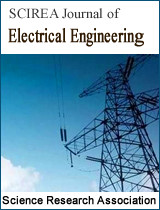Investigation of temperature and pressure dependence of thermodynamic parameters and Debye–Waller factor of CuAg72 alloy
DOI: 290 Downloads 15578 Views
Author(s)
Abstract
This study applies the anharmonic correlated Einstein model to the spectra of extended x-ray absorption fine structure (EXAFS) to study how pressure and temperature affect the cumulants and thermodynamic parameters of copper, silver, and their alloys. The parameters for the effective interatomic potential are derived by using the second-cumulant approximation, which includes contributions from all nearest neighbors of the absorbing and scattering atoms. The calculated thermodynamic parameters and effective anharmonic potential are consistent with those obtained experimentally and from other theories. The results prove that the anharmonicity of the thermal vibration of atoms is an essential contribution to the thermodynamic parameters and the EXAFS second cumulant at high temperature for ambient pressures up to 14 GPa. Increasing pressure reduces the EXAFS amplitude by reducing the atomic mean-square relative displacement (MSRD), which characterizes the EXAFS second cumulant (i.e., the Debye–Waller factor).
Keywords
anharmonic; CuAg72 alloy; pressure; second cumulant; thermodynamic parameters
Cite this paper
Nguyen Ba Duc,
Investigation of temperature and pressure dependence of thermodynamic parameters and Debye–Waller factor of CuAg72 alloy
, SCIREA Journal of Electrical Engineering.
Volume 4, Issue 2, April 2019 | PP. 35-47.
References
| [ 1 ] | J. J. Rehr, Rev. Mod. Phys., 72, 621 (2000). |
| [ 2 ] | Y. Iwasawa, K. Asakura, and M. Tada (Springer International Publishing, Cham., 2017). |
| [ 3 ] | T. Yokoyama, J. Synchrotron Radiat. 6, 323 (1999). |
| [ 4 ] | V. V. Hung, H. K. Hieu, and K. Masuda-Jindo, Comput. Mater.Sci., 49, 5214 (2010). |
| [ 5 ] | G. Bunker, Nucl. Instrum. Methods Phys. Res. 207, 437 (1983). |
| [ 6 ] | G. Beni and P. M. Platzman, Phys. Rev. B, 14, 1514 (1976). |
| [ 7 ] | A. I. Frenkel and J. J. Rehr, Phys. Rev. B 48, 585 (1993). |
| [ 8 ] | N. V. Hung and J. J. Rehr, Phys. Rev. B 56, 43 (1997). |
| [ 9 ] | A. Nafi, M. Cheikh, and O. Mercier, J. Adhes. Sci. Technol. 27, 2705 (2013). |
| [ 10 ] | J. C. Kraut and W. B. Stern, J. Gold Bulletin 33, 52 (2000). |
| [ 11 ] | N. B. Duc, V. Q. Tho, N. V. Hung, D. Q. Khoa, and H. K. Hieu, Vacuum 145, 272 (2017). |
| [ 12 ] | N. V. Hung, N. B. Trung, and N. B. Duc, J. Materials Sci. and Appl. 1, 91 (2015). |
| [ 13 ] | N. B. Duc, H. K. Hieu, N. T. Binh, and K. C. Nguyen, X-Ray Absorption Fine Structure: Basic and Applications (Sciences and Technics Publishing House, Hanoi, 2018). |
| [ 14 ] | J. M. Tranquada and R. Ingalls, Phys. Rev. B 28, 3520 (1997). |
| [ 15 ] | B. S. Clausen, L. Grabæk, H. Topsoe, L. B. Hansen, P. Stoltze, J. K. Norskǿv, and O. H. Nielsen, J. Catal. 141, 368 (1993). |
| [ 16 ] | E. Benassi, Chem. Phys. 515, 323 (2018). |
| [ 17 ] | M. Okube and A. Yoshiasa, J. Synchrotron Radiat. 8, 937 (2001). |
| [ 18 ] | M. Okube, A. Yoshiasa, O. Ohtaka, and Y. Katayama, High. Press. Res. 23, 247 (2003). |
| [ 19 ] | N. V. Hung, N. B. Duc, and R. R. Frahm, J. Phys. Soc. Jpn. 72, 1254 (2002). |
| [ 20 ] | N. V. Hung and N. B. Duc, Proceedings of the Third International Workshop on Material Science (IWOM’S99, 1999). |
| [ 21 ] | N. V. Hung and N. B. Duc, Commun. Phys., 10, 15 (2000). |
| [ 22 ] | H.Ö. Pamuk and T. Halicioğlu, Phys. Stat. Sol. A 37, 695 (1976). |

